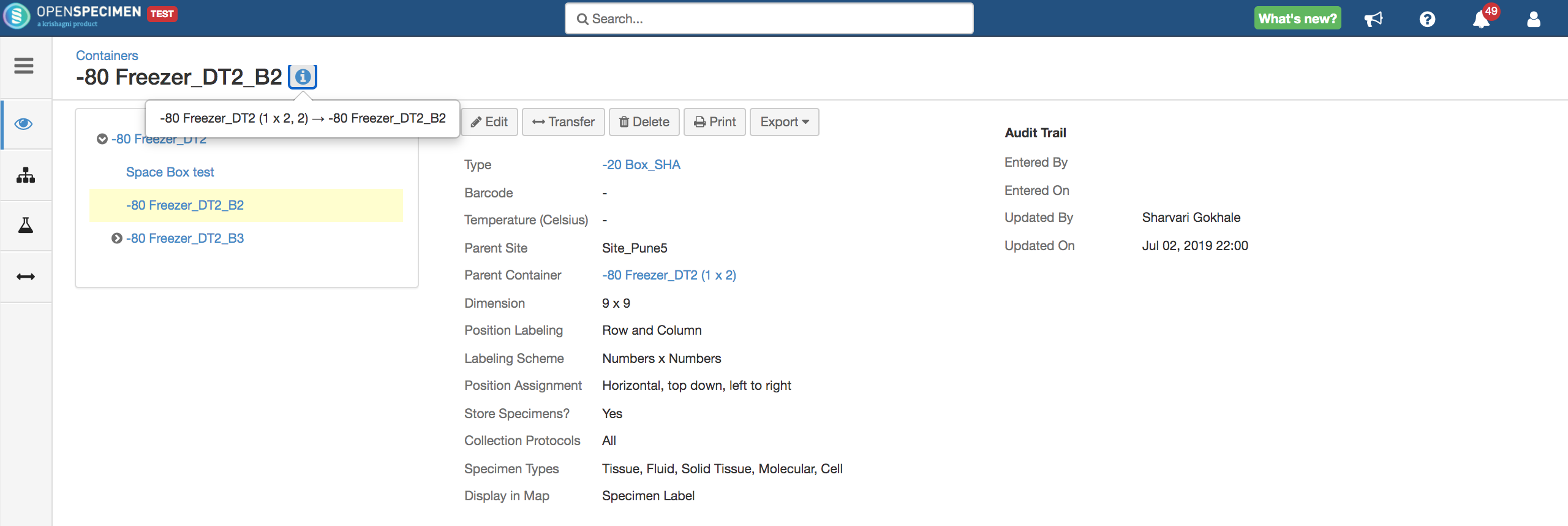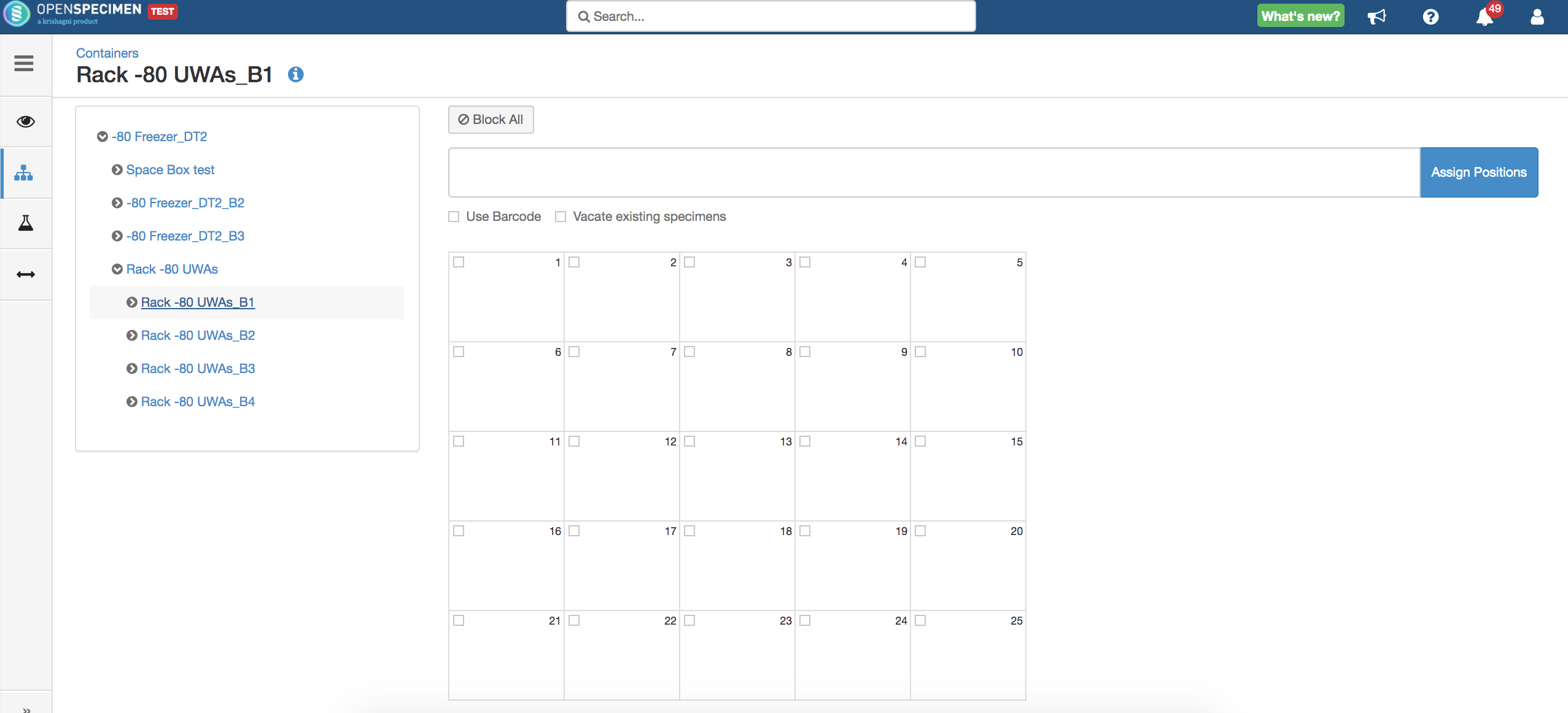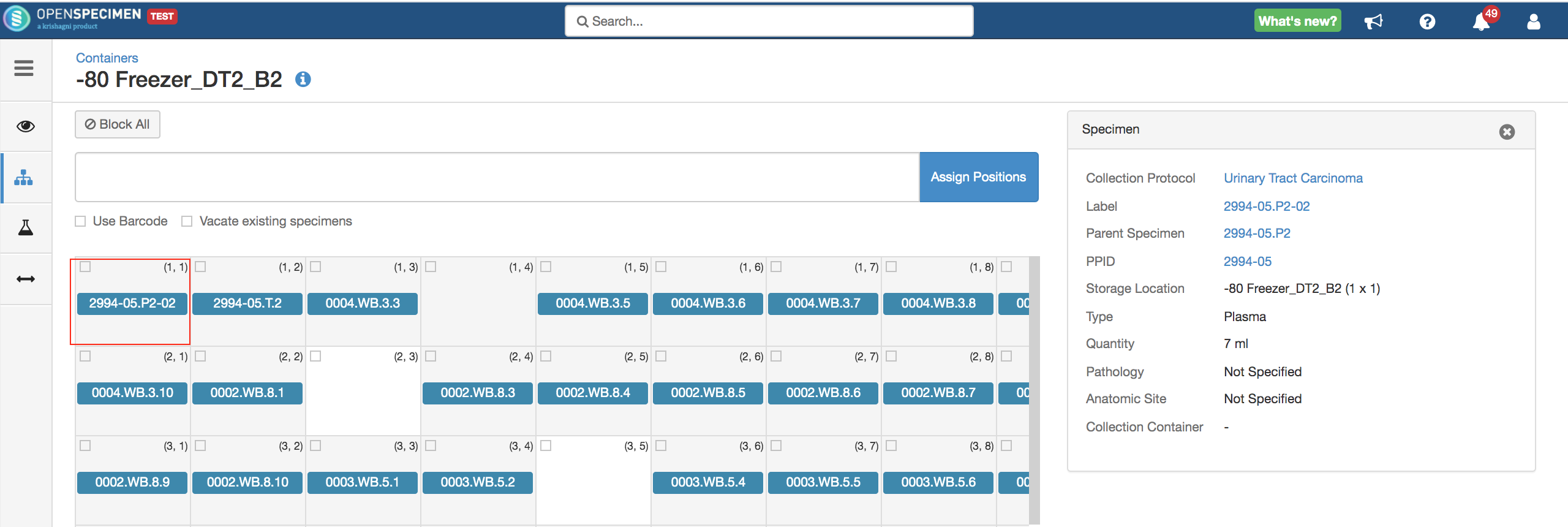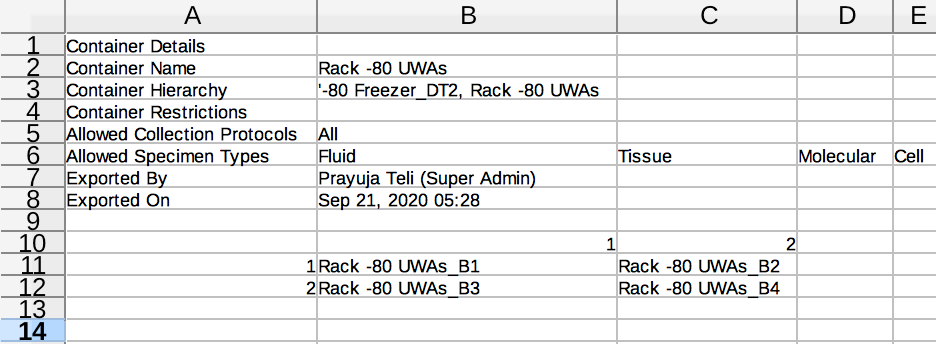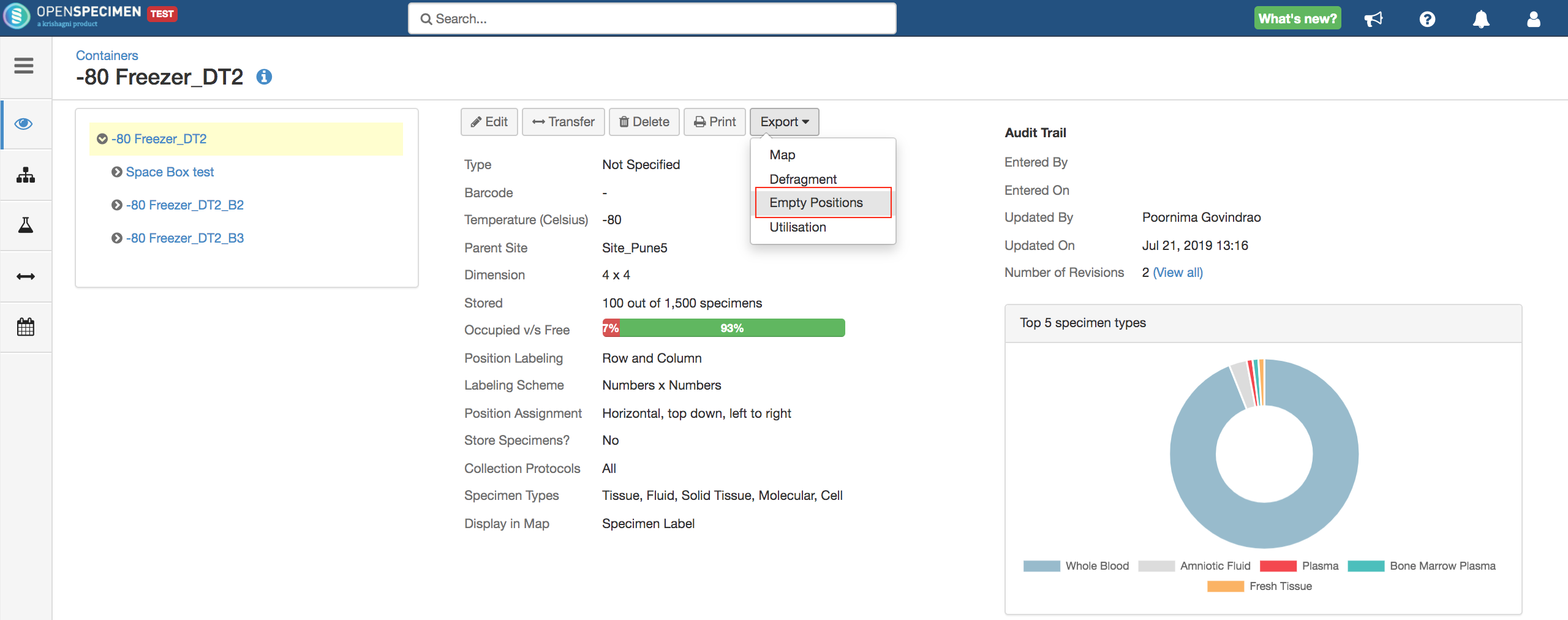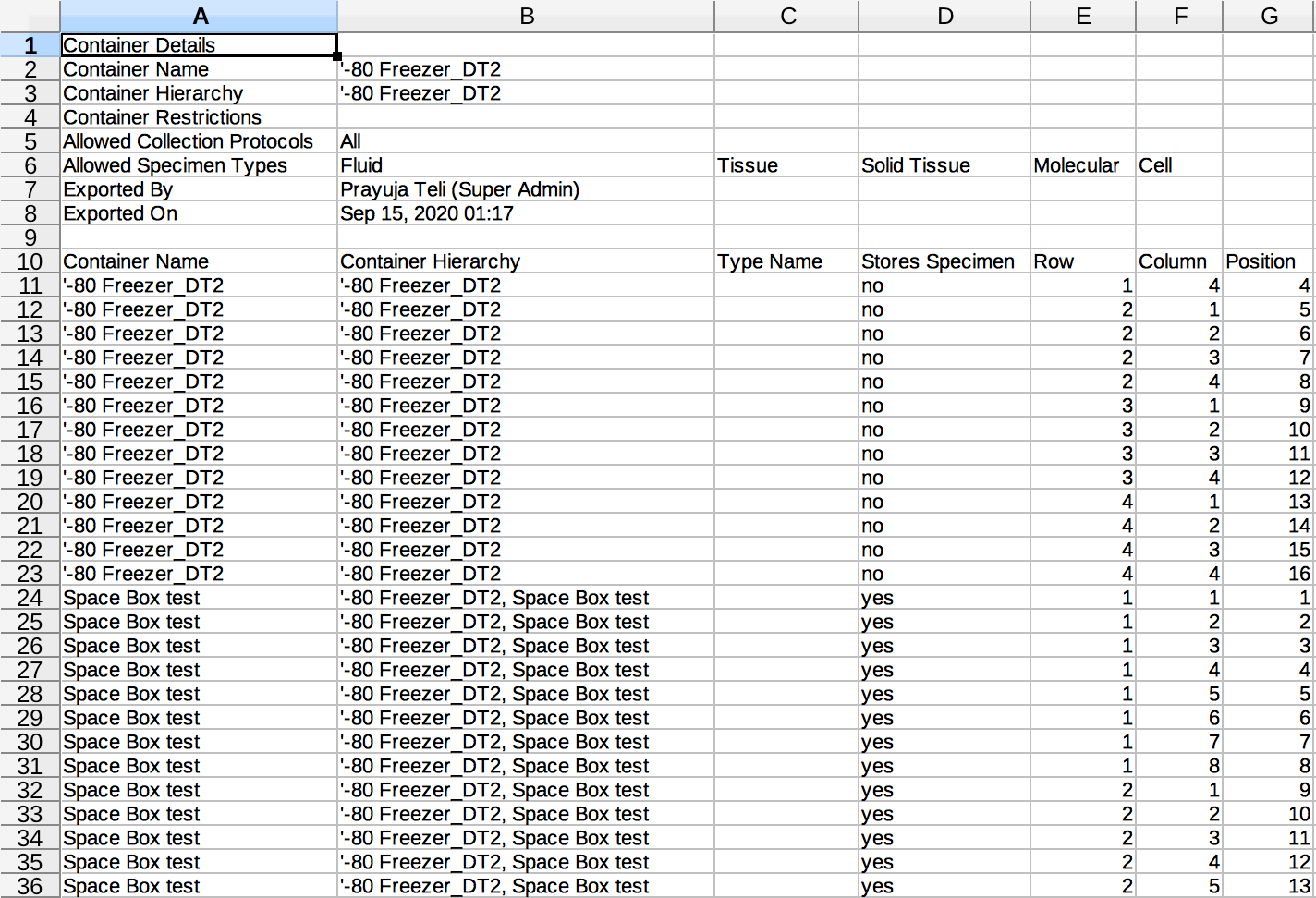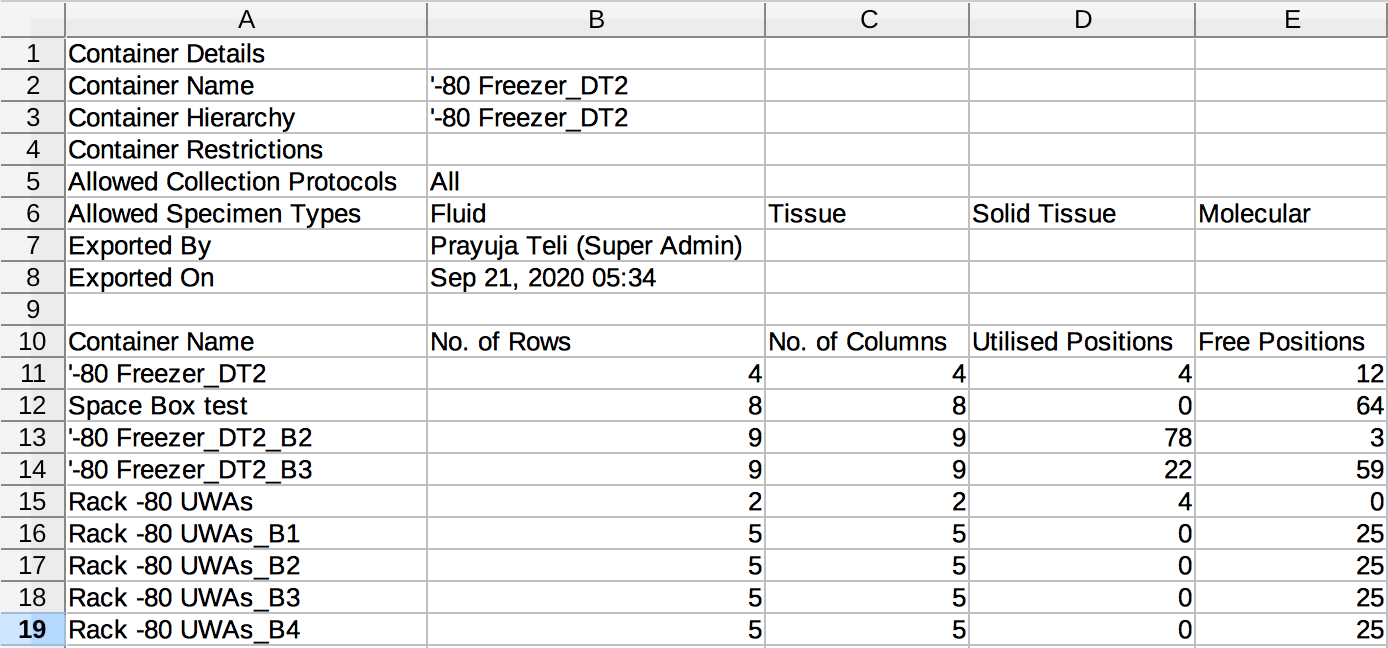Container overview
Under each container, there are four tabs on the left-hand side: Overview, Locations, Specimens and Transfer Events (new in v6.2).
At the top, the name of the container is displayed. Hovering over the 'i' icon displays the entire hierarchy of the container and its position in the parent container(new in v6.2).
To view each container's content, click on the 'Locations' tab under the specific container. This is useful if you want to do re-inventory and to look for empty spaces in each box.
NOTE: There is no map view available for dimensionless containers.
To view more details of the specimen stored in a particular location within the box, click on the cell's specimen. The overview is displayed to the right:
Exporting container details
You can export different reports by using the 'Export' feature from containers.
Exporting Map
The 'Overview' option displays details of the container. To export the content of a box to a CSV file, click on 'Overview', select the box from the tree view on the left-hand side, and then click on Export → Map.
Once you export the file, you will get a .zip file under which you can view the .csv file like below-containing data of boxes under a specific container rack.
Exporting defragmentation report
Refer to Defragmentation Report wiki page.
Exporting empty container details
To export the number of empty rows, columns, and positions in the container.
You can export the .zip file using.'Empty Positions' option under a freezer.
Once you export the file, you will get a .zip file under which you can view the .csv file like below-containing data of empty rows, columns, and positions in the container.
| Column Names | Explanation |
|---|---|
Container Name | Name of container |
Container Hierarchy | Hierarchy of container E.g., Freezer → Rack → Box |
| Store Specimen | Does the container store specimen in a specific position. If the specimen is stored: Yes If the specimen is not stored: No |
Row | The row number of the empty containers. |
| Column | The column number of the empty containers. |
| Position | The position number of empty containers. |
Exporting container utilization report
To export the utilization report of the container, select the container from the tree view on the left-hand side and then click on Export → Utilization.
Once you export the file you will get a .zip file under which you can view the .csv file like below that contains data of 'Utilized Positions' and 'Free Positions' in the container.
| Column Names | Explanation |
|---|---|
Container Name | Name of container |
No. of Rows | Row numbers under a container |
| No. of Column | Column numbers under a container |
Row | The row number of the empty containers. |
| Utilized Positions | The number of empty/available Positions in containers. |
| Free Positions | Number of filled/occupied Positions in containers. |
Note: The export option of exporting container data is available under every level of the container.
You can export data in the below scenarios.
Exporting whole ‘Freezer’ data.
Exporting data from the ‘Shelf’ level.
Exporting data from the 'Racks' level.
Exporting data from 'Drawers' level.
Exporting data only for the 'Box' level.
Exporting data for dimensionless container. (The .csv file will contain only headers and no information about the position, rows, and columns)
Exporting data for fully occupied container.
Exporting data for completely empty containers.
Exporting data for partially filled containers.
